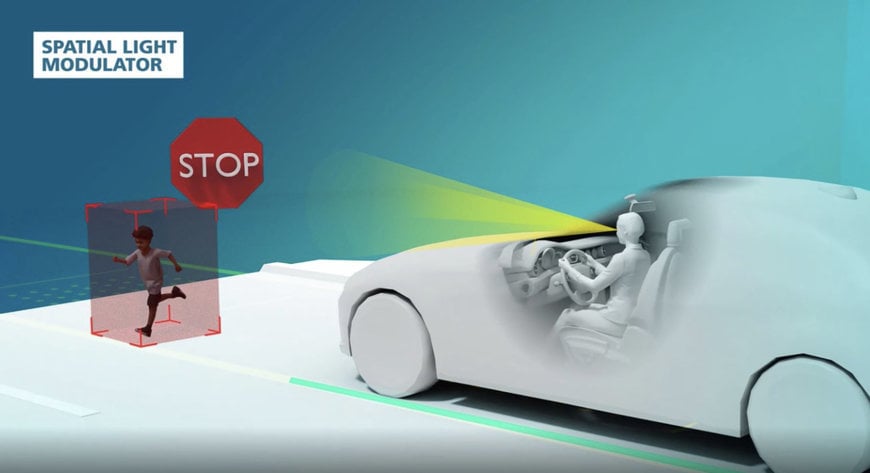www.industryemea.com
08
'22
Written on Modified on
FRAUNHOFER: REALISTIC HOLOGRAPHY FOR A SAFE DRIVING EXPERIENCE
Photonics focuses on the use of light with all its possibilities. From light control to laser technologies and data transmission, photonics is used in many fields such as medicine, industry, astronomy, microscopy or traffic safety. One of the leading research institutes in this field is the Dresden Fraunhofer Institute for Photonic Microsystems IPMS.

Micromirror arrays of the Fraunhofer IPMS
The spatial light modulators developed by Fraunhofer IPMS in the form of micromirror arrays contain a large number of individual micromirrors on an active semiconductor chip or on passive substrates (without integrated on-chip electronics). By deflecting individual mirrors from their rest position, a spatially resolved modulation of the light occurs, which is directed onto the device surface. Main applications of these micromirror arrays are in the fields of microlithography in the deep ultraviolet range, fabrication of printed circuit boards (PCB), semiconductor inspection and metrology as well as in ophthalmology, astronomy, holography and microscopy. The latest development of Fraunhofer IPMS is a CMOS-integrated micromirror array with two tilting axes per mirror and associated technology platform. In addition to its use in the semiconductor industry, the innovation enables novel methods of imaging in microscopy, especially for biomedical applications.
Realistic holography for a safe driving experience
The Fraunhofer IPMS micromirror arrays also contribute to road safety. Current head‑up displays in vehicles can only show elements at a fixed distance and in 2D, which means that the focus while driving is either on the projected object or the road. This can be dangerous in confusing situations. In the future, Fraunhofer IPMS' innovative micromirror arrays will enable computer-generated holography that generates a light field that merges the real and virtual worlds - in motion and in real time. In the process, millions of tiny mirrors are built onto a semiconductor chip, which bend the light in such a way that realistic 3D images are created as spatial projections. These blend perfectly into the real world without the need for special glasses and without causing fatigue, thus ensuring a safe driving experience.
Spatial light modulators for space applications
Earth observation data are becoming increasingly important for our understanding of the planet and for addressing socio-ecological challenges - for example, in the area of environmental monitoring. Currently, methods for data acquisition and processing from space are limited by long acquisition times (up to several days per measurement), low spatial resolution (about 1 km), and the usable spectral range (mainly in the visible). Novel camera systems based on spatial light modulators can remedy this situation, which are being realized and tested within the EU project SURPRISE. Fraunhofer IPMS contributes with its long-standing expertise in the field of spatial light modulators and plans the development of a spatial light modulator suitable for space applications. Main tasks are the participation in the demonstrator development as well as the preparation of a feasibility study and development roadmap for a first space-qualified surface light modulator (SLM) to be developed entirely in Europe.
www.ipms.fraunhofer.com

